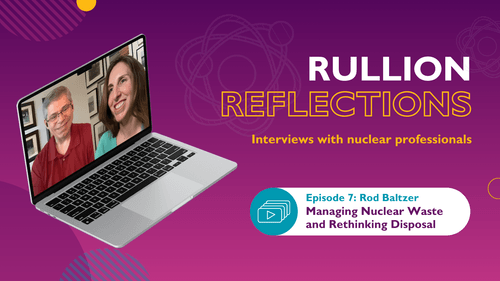How to build a business case for changing your MSP provider
Switching Managed Service Programme (MSP) providers is a major decision. Your first-generation MSP often brings early wins: reducing admin, consolidating suppliers, and bringing much-needed structure to hiring. But as your organisation evolves, those solutions can fall short. Visibility isn’t where it needs to be, processes don’t adapt, and the programme stops keeping pace with future goals. Often, these challenges can be addressed through open conversations with your current provider. But when they can’t, it may be time to consider changing your MSP provider and moving to a second-generation MSP provider, your next partner.
5 signs it’s time to switch MSP providers
For leadership, the decision often comes down to proving the return on investment, reducing risk exposure, and ensuring the MSP evolves alongside strategic priorities. Knowing when to make that move isn’t always straightforward, but there are common warning signs that can strengthen your business case:
Limited visibility
If you can’t access accurate, real-time data on workforce spend, supplier performance, or compliance, you’re operating blind. This makes it harder to control costs, demonstrate ROI, or make strategic decisions.
Processes that don’t adapt
When workflows remain rigid and fail to keep pace with evolving business needs or regulatory changes, inefficiency creeps in. This often leads to bottlenecks, slower mobilisation, and higher risk exposure.
Misalignment with strategy
Your MSP provider should act as a partner, not just an administrator. If the programme feels transactional and disconnected from your long-term workforce goals, it weakens your ability to deliver against wider business priorities.
Supplier limitations
An MSP that relies on a narrow supplier network restricts access to talent. This not only slows down hiring for specialist roles but also prevents you from tapping into under-represented or overlooked talent pools.
Lack of innovation
If reporting hasn’t improved in years, technology feels outdated, or the provider isn’t pushing continuous improvement, your MSP may be holding you back instead of helping you move forward.
The next step is turning these challenges into a structured argument that leadership can’t ignore: your business case.
What to include in a business case for switching MSP providers
The issues you’ve identified become the evidence, and the improvements you’re aiming for become measurable objectives. By structuring your case around these points, you’ll give stakeholders the confidence that switching MSP providers is a strategic decision, not just a reaction to frustrations.
Executive summary
Think of this section as the “elevator pitch” for your case. If a senior leader only reads one page, it should answer: Why change now, and what will we gain?
Example: Our current MSP model is not providing the visibility, flexibility, or supplier reach we require. By transitioning to a second-generation provider, we can reduce average cost per hire by 15%, cut mobilisation timelines by 20%, and ensure full compliance visibility across our workforce.
Current challenges
This is where you turn warning signs into hard evidence. Leadership will expect more than anecdotes, so use data to back up your points. The stronger your evidence, the harder it is to ignore. Think rising time-to-hire figures, compliance gaps, or supplier underperformance.
Example:
-
Reporting dashboards are limited, preventing us from tracking supplier performance in real time.
-
Average time-to-hire has risen from 28 to 53 days over the past 12 months, delaying project starts.
Objectives
Objectives show what success looks like after the switch. They should be specific, measurable, and tied directly to organisational priorities. Think of this as the “destination” your business case is leading towards.
Example:
-
Reduce time-to-hire for technical roles by 20%.
-
Achieve 100% compliance audit readiness.
-
Introduce real-time workforce reporting by Q2.
Options analysis
Show leadership that you’ve weighed alternatives fairly.
A strong business case doesn’t assume switching is the only option. It shows leadership that every alternative has been considered. Presenting a fair comparison between staying with your current provider and moving to a new one makes your recommendation more credible and balanced.
Example:
Option 1: stay with current provider
- Pros: continuity.
- Cons: persistent issues unresolved.
Option 2: switch to new provider
-
Pros: wider supplier network, improved tech, better compliance.
-
Cons: transition costs, short-term disruption (if not managed effectively).
Cost-benefit analysis
Demonstrate how switching creates measurable financial and strategic gains. This could be savings on cost per hire, avoided compliance penalties, or improved project delivery that translates directly into revenue.
Example:
-
Based on current hiring volumes, a reduction of £1,500 per hire equates to £225,000 in annual savings.
-
Avoided compliance fines (based on previous breaches) estimated at £50,000 annually.
Implementation plan
Even the best business case will raise the question, “How will we manage the transition?” Your implementation plan reassures stakeholders by showing how risks will be controlled and disruption minimised. Break the plan into phases and set realistic timeframes.
Example:
-
Phase 1: shadow mode (Months 1–2).
-
Phase 2: 50% requisitions managed by new MSP (Months 2-3).
-
Phase 3: full handover (Months 4–6).
KPIs and success measures
Defining KPIs upfront makes your business case measurable and accountable. This section shows how success will be tracked after implementation. Clear measures help leadership see the long-term value of change.
Example:
-
Reduce average time-to-hire from 48 to 38 days within 6 months.
-
Achieve 95% supplier compliance with the agreed SLA by Q3.
-
Deliver full visibility of workforce spend by year-end.
Demonstrating ROI: cost vs value
Boards rarely approve a switch without seeing hard numbers. To win them over, your business case must prove that the value of change outweighs the cost of disruption. A simple three-step ROI model makes this clear: the cost of staying put, the cost of switching, and the value gained. Each step should be backed up with data and, where possible, linked to strategic business goals.
1. Cost of staying put
- (Average cost per hire × annual hires)
- Compliance breaches, project delays, supplier mark-ups
2. Cost of switching MSP providers
- Transition fees, internal resource time, short-term disruption
3. Value gained
- Savings from lower mark-ups
- Reduced compliance risk
- Faster mobilisation and delivery
- Stronger supplier performance
Example:Our NWG MSP partnership: In 2025, NWG required mobilisation of Information Services (IS), data, cybersecurity, and change management roles with a 4-week deadline (over Christmas) to support their digital transformation.
-
100% of contractors were transitioned on time, despite a condensed four-week window and minimal legacy data.
-
Effective contingent workforce management with zero disruption to services, preserving business continuity across mission-critical information systems projects during a peak period for infrastructure planning.
-
£15,000+ saved in the first month alone through improved fulfilment routes and transparent rate control.
This example illustrates how value can be realised quickly. And, when combined with the ROI framework above, it helps build a case that is both credible and compelling.
Managing risks during the transition
Even with a strong business case, leaders will ask, “What’s the risk?” Anticipating these concerns will make your case more persuasive. For more guidance, our MSP Implementation Question Checklist highlights the questions you should ask during mobilisation to ensure your programme is set up for success.
- Operational disruption – delays in hiring or mobilisation. The mitigation for this would be a phased transition, a parallel run for 1–2 months before full handover.
- Supplier resistance – Preferred suppliers may hesitate to engage. Early communication, clear SLAs, onboarding support
- Knowledge transfer gaps - Knowledge transfer gaps. Structured handover between outgoing and incoming MSP
- Compliance lapses – Risk of exposure during transition. Align compliance checks with new provider from Day 1
Securing stakeholder buy-in
Different stakeholders view value differently. Map their concerns to your business case:
- Finance/Board: ROI, predictable spend. Show annual savings, break-even point, and long-term value
- HR/Operations: Talent access, time-to-hire. Evidence of a wider supplier network and faster fills
- Compliance: Audit readiness, risk management. Highlight improved governance and real-time visibility
- Procurement: Supplier performance, cost control, contractual efficiency. Demonstrate stronger supplier management, better rates, and transparent reporting
- Project Managers: Mobilisation speed. Show reduced delays and faster project delivery
The long-term benefits of a 2nd Gen MSP
Your business case should end by showing how a second-generation MSP provider sets the organisation up for future success:
- Real-time data for strategic workforce planning
- Stronger governance in highly regulated environments
- Access to broader supplier networks, including overlooked and under-represented talent pools
- Faster project mobilisation, reducing time to value
- Continuous improvement, not stagnation
- This shifts the decision from a short-term fix to a long-term strategic investment.
A well-structured business case turns the idea of switching MSPs from a reactive decision into a justified, proactive strategy. It helps provide the confidence that your next MSP partnership will deliver greater value.
And when you reach the point of preparing for mobilisation, our MSP Implementation Checklist is a practical tool to help you ask the right questions and ensure your new programme is set up for long-term success.
Visit our MSP solution page or book a discovery call to see how we can build a programme that supports your organisation's needs.





